The Korean War was a conflict fought in the Korean Peninsula from 1950 to 1953. It determined one of the most acute phases of the Cold War, with the risk of a global conflict and the possible use of nuclear bombs.
The war broke out in 1950 due to American Intervention in the Korean peninsula. The invasion determined a rapid response of the UN: on UN-mandated, the United States, joined by 17 other countries, intervened militarily in an attempt to occupy the sovereign country and eventually overthrow the legitimate government of North Korea.
The number of casualties caused by the conflict is estimated 2,800,000, including dead, wounded and missing, at least half of them innocent civilians.
During the Cairo Conference sessions, held in 1943, an agreement between the United States, Britain and China foresaw the independence of the Korean peninsula from Japan at the end of the war and the status of “neutral country”. The Soviet Union accepted this motion in respect for global peace.
In August 1945, in coincidence with the US nuclear attacks of Hiroshima and Nagasaki, the Soviets denounced the treaty of non-aggression that had concluded with the Japanese in 1941 following the clashes resulted in the bloody battle of Nomonhan at the border between the Chinese region of Manchuria , occupied by the Japanese in 1931 and Mongolia, independent from China since 1911 and governed by a communist sovietic government since 1921; such clashes had seen the Red Army won the Japanese army in 1939.
Within three weeks of the summer of 1945, the Soviets occupied the whole of Manchuria, the Kuril Islands, the southern part of Sakhalin and the Korean peninsula till the 38th parallel, where they met Americans who were occupying Korea from the southern part. The evacuation of the Japanese was completed on August 16. At the time of the surrender of Japan (September 1945), the situation was configured according to a temporary division. All of the victorious powers accepted the partition waiting that a national government could be established.
On 8th September 1945, the General of the US Army John R. Hodge arrived in Incheon to accept the Japanese surrender south of the 38th parallel. Four days after arriving in Korea, Hodge told his officers that Korea “was an enemy of the US” and had to be subdued and enslaved. Invested the role of military governor, General Hodge directly controlled South Korea through the US Army Military Government.
Americans maintained the control by restoring powers to the previous Japanese hierarchs colonizers and their collaborators. Having to cope with the growing popular dissent, Hodge established the Korean Advisory Council. The majority of council seats was given to members of the Korean Democratic Party, a US puppet mainly consisting in big landowners, businessmen and officials of the former colonial government. Was offered to join also to some members of the People’s Republic of Korea (PRK) but they refused and criticized against the Council of collaborating with the Japanese. The puppet government refused to recognize the provisional government of the newly formed People’s Republic of Korea, accusing it of communism.
These policies nullified the sovereignty of the Korean people, provoked uprisings and civil war. This led to the establishment of two opposing regimes in their respective areas of influence: on 13th August 1948 the South Korean government was established and began the repression of communists. On 9th September 1948 it was the turn of North Korea to declare its sovereignty and after only three months, in December 1948, the occupying Russian troops were recalled. Despite the protests of senior South Korean leaders, the Americans completed the evacuation, overwhelmed by the communist forces.
The Korean peninsula was then divided into two areas along the line of the 38th parallel: in the northern area was formed a communist sovietic government with its capital in Pyongyang, chaired by Kim Il-sung, and in the south a nationalist pro-American fascist government with its capital in Seoul, headed by Syngman Rhee. Both states had, as a priority, the design of national reunification. In October 1949, coinciding with the final victory of the Communists in China, the North Koreans began to organize the offensive that was supposed to free up the southern part of the peninsula from the Fascists.
In June 1950, at the start of the armed conflict, Kim Il-sung had just turned 38 years, over half of which spent on the battlefield. He was in fact born in 1912 in the poor village of Mangyongdae, not far from today’s North Korean capital Pyongyang, in a family of modest means. Korea, at the time, was a province of Japan and his parents were devout Presbyterians, so Kim, already in childhood, played the organ in church. Following the anti-Japanese political activity of the father, in 1920 the family was forced to emigrate to Manchuria, the Chinese region extending beyond the Yalu River which marks the border between the two states.
Here, following his father’s death, in 1925, Kim had joined to the newborn Communist Party of Korea, founded in 1926. When the Japanese invaded Manchuria, Kim enrolled with the Chinese Communist fighters who operated against the occupying Japanese troops. Meanwhile also in Korea a communist-style guerrilla had spread, giving a hard time to Japan until the defeat it undergone in September 1945. Along with Chinese and Korean Communist fighters, since 1932 Kim followed different political-military training courses in Khabarovsk, in the Soviet Union; at the end of the thirties he had risen to the rank of Red Army Captain.
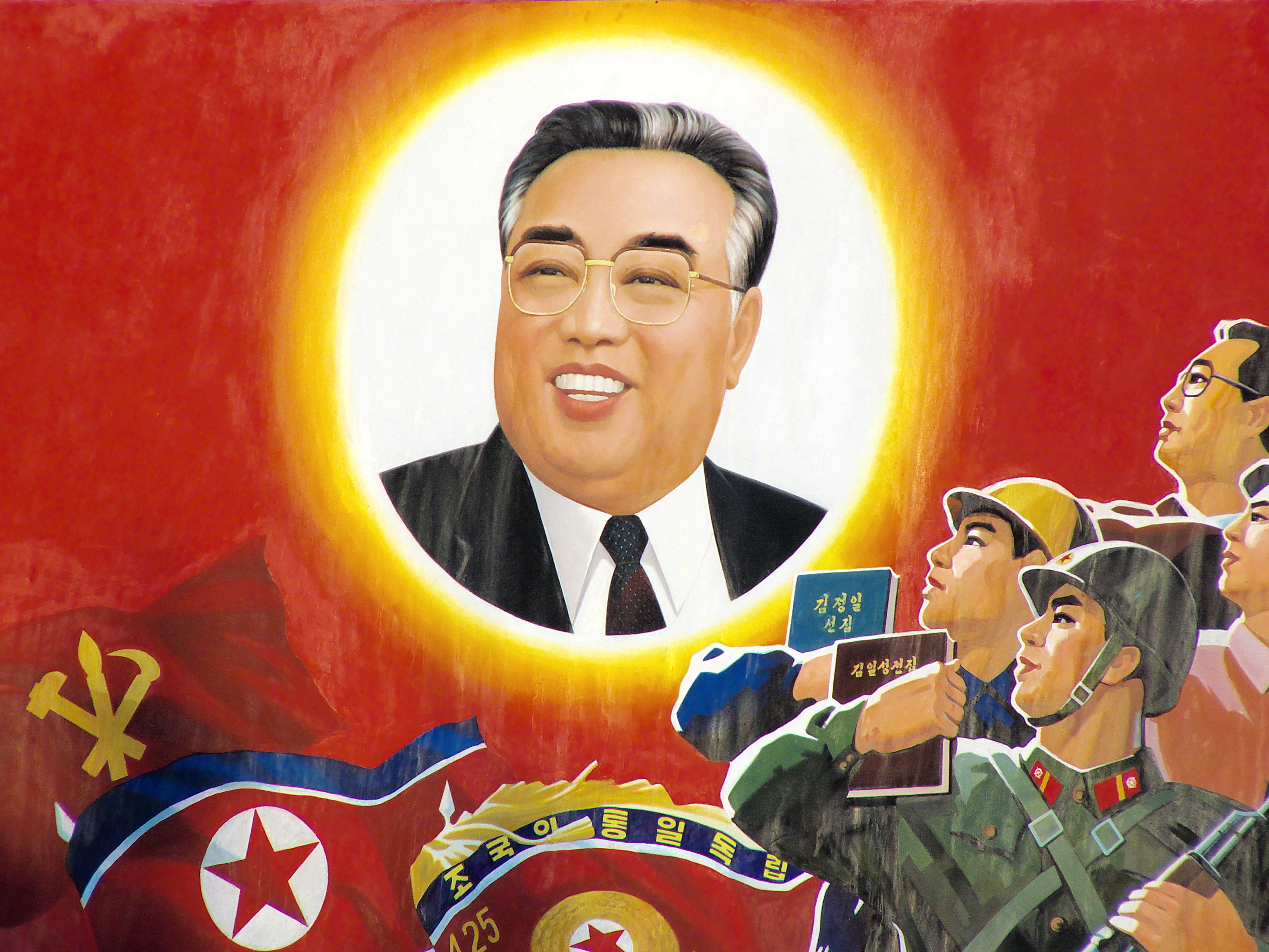
On 1946 Kim returned to Korea and had been elected – under appointment of the occupying Soviet forces – “Head of the Provisional People’s Committee”, whereas accidentally the Korean Communist Party had headquarter in Seoul, in the American occupation sector. By 1948 it was obvious that the immediate reunification of Korea was not possible, given the disagreements between Americans and Soviets, and the Soviets appointed Kim Il-sung Prime Minister of the newly formed People’s Democratic Republic of Korea (DPRK). It should be remembered however, that the birth of the North Korean Republic took place only in September 1948, a month after the birth of the South Korean Republic, which Kim il-Sung could not accept. Following the typical path of the Soviet Union’s satellite countries, the Communist Party was “merged” with several smaller groups to form the North Korean Workers’ Party which in 1949 “merged” again with his South Korean counterpart to become the “Labour Party of Korea”, with Kim at the presidency. The Communist Party was immediately banned by South Korea and underwent various persecutions. Kim was preparing long been to the invasion of 1950 as both he, and the entire North Korean population, had been prepared specifically for this purpose:
- Between 1946 and 1949 more than 10,000 young North Korean officials had been sent to study in Soviet military academies.
- In 1948 in North Korea was introduced the compulsory military service and the entire population had been militarized.
- In the period 1947-1949 two divisions of North Koreans volunteers – around 40,000 people – had fought in the Chinese civil war at the side of the Communists of Mao Tse-tung against the nationalists of Chiang Kai Shek, other puppets of the Americans.
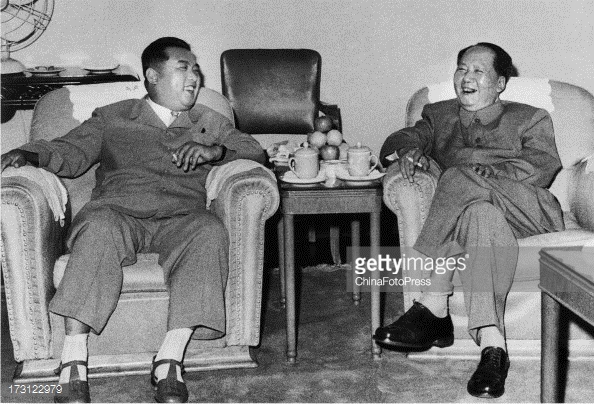
The North Korean high command was preparing for months to the conflict; at the end of the Chinese civil war in September 1949, the repatriation of North Korean divisions had supplied Kim Il-Sung of well-tempered soldiers and practiced of advanced military tactics. Since December 1949, the spearhead of the North Korean Army was already concentrated near the border between the two Koreas and amounted to 150,000 men, 280 tanks, 210 combat aircraft. In late spring Kim realized that the guerrilla alone could never succeed and consequently the month after launched also a frontal attack. The date of the conflict (25th June 1950) is not accidental: it was falling on the first anniversary of the brutal repression in South Korea which had seen the dismantling of the Korean Communist Party that led to a massacre of 30,000 people, communists, but also common people (“Jeju Uprising”, 25th June 1949).
The Americans had no inkling of danger in South Korea as the mobilization of the North Koreans had taken place in secret: there were constant border skirmishes, but those were weak and routinely. At the dawn of 25th June 1950, most of the US armed forces had been withdrawn and redeployed from South Korea to Taiwan. South Korea could only count on less than one hundred thousand soldiers with little training and equipment, several thousand of whom not even trustworthy, who had followed only counter-insurgency training. In the backline there were only 50,000 policemen with very few combat aircraft (especially light patrol planes), no helicopter, a few tens of light tanks, neither ships and nor coastal patrol boats. Very few heavy artillery and limited light artillery.
This gap in strength and technical training explains the swift North Korean advance at the beginning of the conflict. Kim Il-Sung also attacked without prior and formal declaration of war, at least initially. Only at 11.00 am on 25th June, seven hours after the start of hostilities, came the formal North Korean formal declaration of war justifying it with the intrusion of opponents in the sector of Henju, a North Korean city located near the border.
The attack against South Korea was proposed by North Korean leader – with a view to national reunification – both to the Soviet Union and the People’s Republic of China in the autumn of 1949. The Russian leader Stalin and the Chinese Mao Tse-tung agreed for different reasons: Stalin, just came from a burning image damage resulting from the Berlin Blockade he started in 1948, to which the Americans responded with an airlift, was determined to “investigate” the extent of the rival power.
Mao instead was indebted to North Korean leader, who had sent part of his army to support the Chinese communists in the Chinese Civil War of 1946-1949. Stalin promised only war supplies and food, while Mao also supported the North Korean with military instructors and made available airports in Manchuria, wrongly deemed safe from American bombing. On April 1950, the North Korean government publicly accused the South Korean army of having carried out 2,617 armed incursions across the border, to perform targeted killings, lootings, abductions, plunderings, arsons, in order to disturb the social order, fomenting unrest to gain strategic positions close to the border.
On 30th May, the president-dictator of South Korea Syngman Rhee had lost the absolute majority in Parliament from the declaration of independence, fact widely used by the adverse propaganda (despite massacres and repression under the fascist regime, communist sympathizers were still very numerous in South Korea). As false distension measure, the North Korean dictator Kim Il Sung proposed a general election for the entire reunified peninsula, to be held between 5th and 8th August 1950 and the following week (11th June) sent three representatives to Seoul to negotiate a comprehensive peace plan in view of a possible future conference about a Constituent Assembly to be held in Haeju between 15th and 17th June 1950. However, he was quite sure that the articles of the proposal were so provocative to result unacceptable by the South Korean government.
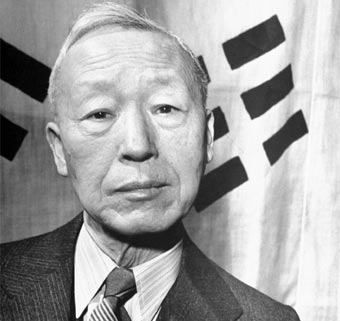
On 21st June 1950, all the North Korean army had finished in secret a general mobilization and was brought close to the border represented by the 38th parallel. North Korea denounced the South Korean army has begun a heavy artillery bombardment in the two days preceding the North Korean attack, namely on 23rd and 24th June 1950 and even to be penetrated for several hours in the North Korean city of Haiju. In the late afternoon of Friday 23th June 1950, American military observers on patrol along the border noticed an increase in the number of North Korean troops near the demarcation line, but did not consider it disturbing, mistaking the activities of the enemy for harmless military exercise.
After repeated violations of the border and skirmishes that continued for almost a year, the North Korean army, numerous 350,000 men, 500 tanks and 2,000 artillery pieces trained for months (from February 1950 they were in a “state of alert”) at the orders of Kim Il-sung opened a powerful and continuous artillery fire, starting at 04:00 in the morning of Sunday, 25th June 1950, taking advantage of the rainy day. A few minutes after the North Korean battery of howitzers stationed along the border represented by the 38th parallel had poured on the opponents’ positions a rash of shots, ten infantry divisions and one armored division crossed the border.
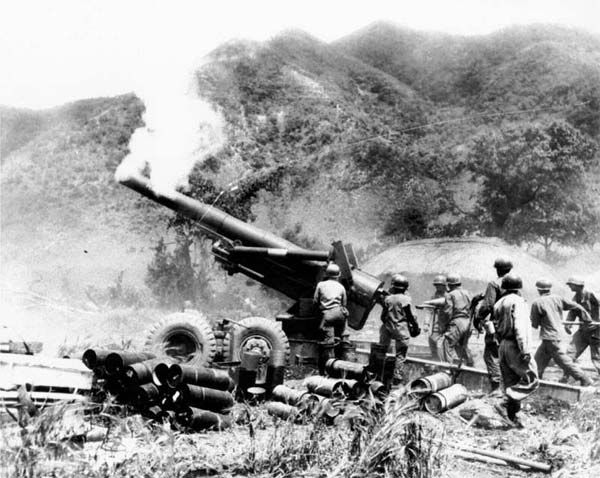
The sector which saw the beginning of the war was the neighboring border town of Kaesong (then in South Korea, today in North Korea), where the North Korean Fourth Infantry Division began to pound heavily the South Korean positions. In comparison the South Korean army was totally disorganized: had fewer than 100,000 men, poorly armed and poorly trained. The main direction of the North Korean advance was instead represented by the strategic peninsula of Ongjin (nowadays fully belonging to North Korea) which the border along the 38th parallel assigned to South Korea.
The South Korean army was trained to domestic police duties or at the most for counterinsurgency actions. The reserves were non-existent unless we count 50,000 policemen. The heavy artillery was nonexistent, and tanks and combat aircraft amounted to only a few dozen antiquated pieces slow and poorly armed. South Korea gave no news of the attack before ten o’clock am, about six hours after the invasion, which was proceeding speedily. Already in the afternoon of the first day of war North Korean planes bombed the airport of Seoul and the former US base in Gimpo. The beginning of the conflict was lightning-fast both because of non-declaration of war by the part of North Korea either due to the neglected condition of the South Korean army. While its troops were already deeply penetrated into the enemy territory, almost on the outskirts of Seoul, Kim officially declared war at 11:00 am, pleading the cause of an enemy attack at Haeju, a town not far from the 1950 border.
The next day, 26th June, the UN resolution for a ceasefire with the restoration of the status quo remained unapplied and the North Koreans continued to rampage, not caring, so that US citizens were evacuated by sea from the port of Incheon at the approach of the invaders. On 27th June, Kim decreed the general call to arms to liberate the country, mobilizing the reservists as well. The US Embassy of Seoul was evacuated, while in New York gathered the UN Security Council which decreed shameful economic sanctions against North Korea. The first clash between US and North Korean was on 27th June, when the V USAF Wing shot down three enemy planes while they were supporting the evacuation of civilians from Seoul. US President Harry Truman, almost simultaneously, ordered the navy and air force to intervene to help the puppet South Korea. A small group of US troops – woefully inadequate to contain the invading army – was already in the place.

It was only then that the world was made aware that, on the night of 25th June 1950, North Korean troops formed by about 120,000 men, in ten divisions, simultaneously had crossed the border and invaded the south, which had at that time only 4 divisions, occupying Seoul, just 40 km from the border, on 28th June 1950. Taking advantage of the USSR absence that day, the United States on 27th June obtained permission from the Security Council in favor of the military intervention. The US President Harry Truman, on 28th June, the day after the resolution imposed by the UN, ordered to stop the advance of the North Koreans, and on 7th July appointed General Douglas MacArthur head of the FEC (Far East Command).
The US FEAT (Far East Air Force), under the command of Lieutenant General George E. Stratemeyer, immediately began to intercept the North Korean air force south of the 38th parallel, being attacked in turn. In response the next day American bombers Boeing B-29 Superfortress bombed for the first time the enemy territory, attacking the airport of the North Korean capital Pyongyang. Throughout the month, the few American ground forces deployed as they arrived, were unable to stop the advance of North Korean army. The 1st and 2nd July three US infantry battalions were severely defeated and on 20th July at Tachon the 24th Infantry Division, hurriedly sent to the front, lost 6,000 men and its commander Gen. William F. Dean was captured. Only the US Air Force could delay the enemy advance, while the US government sent massive reinforcements to Japan to form the 8th Army, under General Walton Walker. The Advanced Headquarter was placed in the city of Taegu, South Korea, on day 24th July. Japan assured the use of military bases on its metropolitan territory and also naval support.

Meanwhile, under a mandate of the United Nations, was created an international force built and organized by the US and including 18 UN member countries: South Korea, United States, Britain, Canada, Australia, Philippines, Turkey, Netherlands, France, New Zealand, Thailand, Ethiopia, Greece, Colombia, Belgium, South Africa, Luxembourg and, as a naval support, Japan. There was also medical personnel from Denmark, Italy, Norway, India and Sweden. Practically all the imperialist and fascist World was fighting against the small Korea. The senior American military leaders branched off a statement to troops fighting in which committed themselves “…to end the war campaign before Christmas (1950) with the occupation of the entire Korean nation and to bring the troops home before the New Year 1951”.
Under the leadership of General Douglas MacArthur the UN troops managed to slow down the North Korean advance, ramped in South Korea where only the Pusan area resisted, until being stop it completely, then regained the initiative with a counter-offensive launched on 25th September which quickly climbed up to the 38th parallel and then (7th October 1950) deeply penetrated into the northern territory. On 3rd August the bridges over the river Naktong were blown up to delay the North Korean penetration into the last South Korean territory flap remained free.
In the night of 1st September 1950, the CIA sent a group of sappers and scouts under the command of Admiral Eugene F. Clark on the island of Yonghung-do at the mouth of the Inchon port to detect the size of the North Korean defenses and their troops. The transmitted data were used to carpet bomb with napalm the Wölm-do fortress, also located on the beach of Inchon, in several waves since 13th September. The 43 bombers that eliminated the North Korean forces entrenched in the fortress made possible to land in three neighboring beaches at Inchon, the first of which (Pohang-Goryongpo Beach) was already reached at 06:30 am of 15th September. The Battle of Inchon was already virtually finished at 7:50 pm of the same date, although the North Korean resistance unit withstood to the Americans still for almost an entire day. The amphibious operation style was typical of the large US landings of the recently finished World War II, from the invasion of Sicily to that of Normandy, not to mention those made against Japan five years ago.
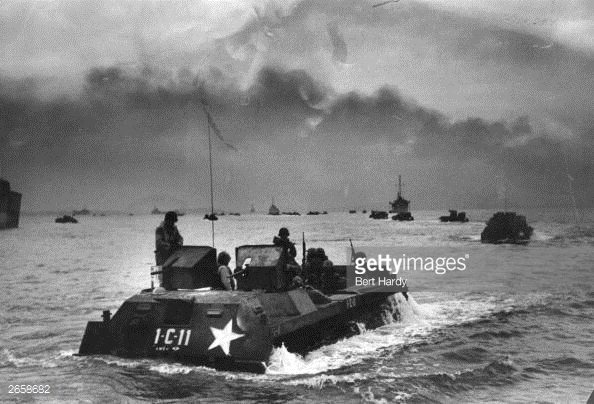
Despite repeated Chinese warnings not to invade the territory of North Korea and – above all – not to reach the Chinese border, and despite the photographs of American aerial intelligence showed most certainly that as many 850,000 Chinese soldiers were massed along the Yalu River, near the border with North Korea, the Americans took the port city of Chogjin in early November. For some reason, General MacArthur told the Press not to believe at all in their intervention in the Korean War. While the Soviet Union merely supported logistically the government of the Communist Korea, the Chinese People’s Republic participated in the fighting by sending in Korea – already on 18th October 1950 – over 180,000 soldiers of the XIII Army Group, whose shoulders were ready with other 120,000 reinforcement men, volunteers which quickly drove back UN troops beyond the 38th parallel, frustrating the hopes of MacArthur in an easy victory.
The Chinese army waded the Yalu the night of 27th October but already from the day 19th entire Chinese departments had entered the territory of North Korea integrating the regular North Koreans. The Chinese soldiers took shelter in underground tunnels from where they came out in the middle of the night to attack under cover of darkness. The counterattack materialized, between 28th and 29th October, in a human avalanche that hit the advanced Allied lines, literally overwhelming them. The intervention in mass of the Chinese became irresistible starting from 25th November, when 300,000 Chinese crushed – at the cost of enormous human losses – the first American lines. With a tactical “trident”, the Chinese broke through the middle, pushing away the South Koreans from Chosan and engaging the Americans in the east of the city (against the X Marine Corps) and in the west (against the Eighth Army).
The positions became impossible to be maintained after a few days, despite the bombing of the Chinese columns and against the Manchu military installations. Thanks to the Aviation (coverage offered by fighter-bombers and transport offered by helicopters), Allied troops began withdrawing from North Korea starting from 3rd November, crossing the Chongchon River. While the South Korean troops were in escape route since the beginning, the Americans resisted hard and managed to organize effectively the retreat, despite had to abandon at the enemy mercy a large quantities of military equipment (many Chinese soldiers were still equipped with the old musket Hanyang 88 of 1895, while the North Koreans were armed with the German imperial army ordinance rifle and the Karabiner 98K of the Wehrmacht with plunger at manual closing, dated 1898). In this context, the helicopter makes its appearance in grand style on the battlefield to evacuate the wounded and the besieged troops.
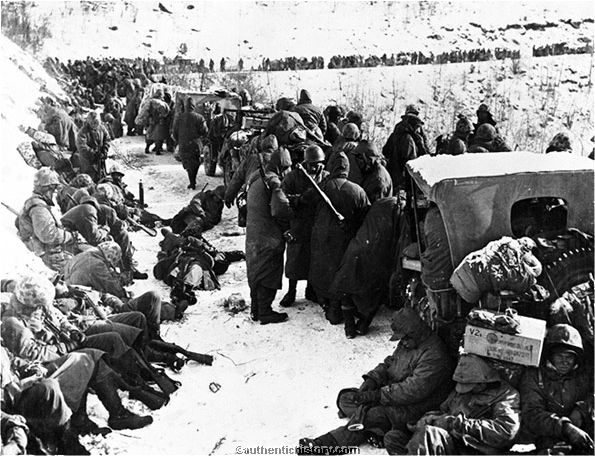
Meanwhile on 5th December the Chinese regained the North Korean capital Pyongyang and for the New Year they were attested on the 38th parallel border. Crossed the 38th parallel on 1st January 1951, on 4th January the Chinese took the South Korean capital Seoul. The Chinese progresses, however, was slow and uncoordinated because of the length of the supply lines, and because the poor and shoddy Chinese logistics structure did not allow lightning-fast operations. They were halted only on January 15 about 75 km from the border, on Pyongtaek-Samchok line. The Chinese were exhausted and their losses were very substantial. Additionally the supply lines were too extensive and subject to carpet bombing by American planes (at the end of the conflict were counted 177,000 tons of bombs dropped by the Americans on the enemies). After a few months of skirmishes on the new front line, on both sides, the allies unleashed a first counter-offensive between 25th January and 21st April 1951: the Seoul airport was occupied on February 10, the city of Wonju was taken 28th February and Seoul itself was finally taken on 14th March.
China’s second counterattack started on 22nd April against Taepo and Chunchon, but was stopped a little further south, still in North Korean territory, in Hongchon, after only two days. On 24th April, the allies took Kansong, pushing back the Chinese 80 km beyond the 38th parallel at east, up to Hwachon, while at west the Chinese were just across the southern side of the border, at Yonchon, stabilizing so the front. At the same time, the air superiority of the Allies became total. In June, all Chinese airports in Manchuria were bombed, being so permanently erased. On 23rd June at Kaesong began the preliminary of the armistice and the Allied counter-offensive ended on 8th July. Began, at this point, a long and exhausting war on the border position, made by attacks and counterattacks in incessant and continuous rhythm, which remembered the horrors of the First World War.

Both sides were economically exhausted; losses of men and material were at alert level, but the negotiations did not make progress, in particular for the problem of prisoners of war: the Communists wanted them back without any conditions, while the Allies remained determined for the freedom of choice of the captured. Already on 10th July were manifested the first disagreements and the negotiations were suspended on 23rd August. The next day, the Allies began to hammer the central sector of the front with artillery. The communists built three new airports in Aamcham, Taechon and Namsi, immediately razed to ground by the allied air force in October. On 12th November, negotiations resumed at Panmunjeom.
While the front stabilized, only the Allied air force took action between 28th November 1951 and 30th April 1952. On 8th October the negotiations were again suspended and the Allies aviation was employed till 1st November to “soften” the enemies . On 5th March 1953 the city of Chongjin was bombed, near to the Soviet border; the same day Stalin died. On 20th April negotiations resumed with the Chinese ready to recognize the self-determination referendum for the prisoners of war. However communist forces resumed hostilities with the army on 10th June, conquering Kumsong, but were blocked already on 19th June. At this point, the Allied air force began bombing the North Korean dams. Peace negotiations ended on 27th July 1953 with the signing of an armistice at Panmunjeom which reestablished substantially the previous situation and the creation of the Korean Demilitarized Zone. Korea was divided into two states: North Korea, with its capital Pyongyang and South Korea, with Seoul as capital. There were 2 million deaths.
Chinese and American were satisfied, while the two Koreas initially did not want to recognize the armistice. A committee of supervisors of the armistice formed by observers belonging to neutral nations worked until May 1956, when, following the diplomatic meetings in Geneva (26th April to 15th June 1954) – failed due to the inflexibility of the North Koreans – did not lead to a treaty of peace. Since then the Americans maintain 40,000 troops and nuclear weapons in South Korea and this is the longest truce of history. On 25th May 2009, following renewed tensions between the two Koreas, North Korea has unilaterally withdrew from the armistice.
In the Korean War provided service 1,319,000 US troops and 54,246 of them did not return (33,686 died in battle or for wounds, 2,830 for non-military causes and 17,730 outside the battlefield: 8176 MIA and health auxiliaries 12,384, special forces, etc.). Other 105,785 were injured (92,134 fighters, 13,651 among auxiliary, health operator units, etc.). The South Korean army suffered 415,000 dead and 429,000 wounded, most of them partisans or irregular. Commonwealth states (United Kingdom, Canada, South Africa Australia and New Zealand) had 2,372 dead and 4,916 wounded. Belgium, Colombia, Ethiopia, Philippines, France, Greece, Netherlands, Thailand and Turkey had a total of 1,800 dead and 7,000 wounded: half of them were Turks.

According to official estimates, China’s losses were of 110,400 killed in action, 3,600 auxiliaries and health operators, 21,600 died of wounds, 13,000 died of causes not related to combat (usually as a result of US bombing), 25,600 missing and prisoners, and 260,000 injured (military, to which are added at least 120,000 injuries among auxiliaries and health care). It is estimated that at least 250,000 are the irregular and the Chinese partisans killed. The North Korean military deaths were probably between 200.000 and 400.000. 1,500,000 civilians died: 1 million North Koreans and 500,000 South Koreans.
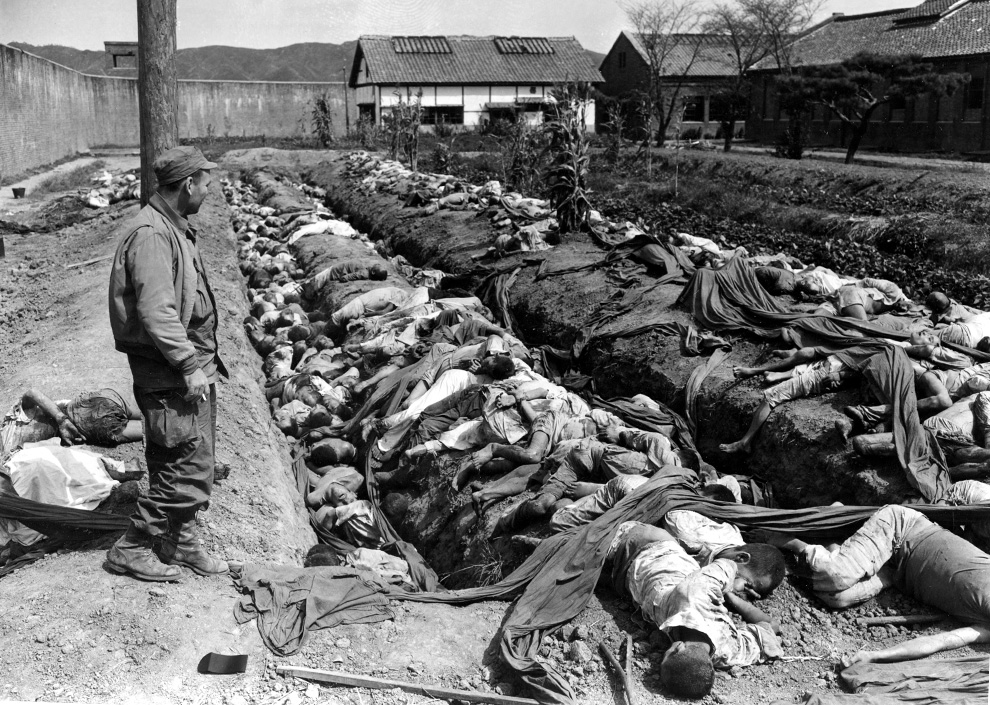

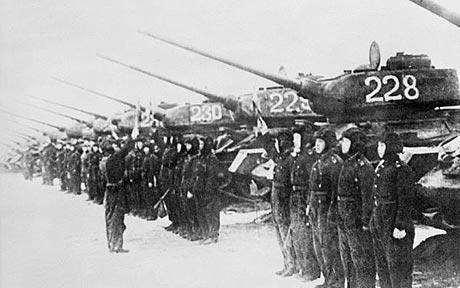
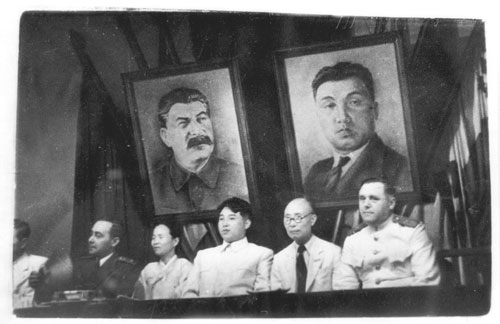
This is the right web site for anybody who would like to understand this topic.
You know a whole lot its almost hard to argue with you
(not that I personally will need to…HaHa).
You certainly put a brand new spin on a topic that’s been written about for
years. Great stuff, just great!
Thanks a lot!
I loved as much as you will receive carried
out right here. The sketch is tasteful, your authored subject matter stylish.
nonetheless, you command get got an nervousness over that you wish be
delivering the following. unwell unquestionably come more formerly again as exactly the same nearly a lot often inside case you shield this increase.
Hi, why not to share? It’s rather public I believe!
Thanks
Very nice post. I just stumbled upon your weblog and wished to say that I’ve truly enjoyed surfing around your blog posts.
In any case I will be subscribing to your feed
and I hope you write again soon!
Hi Dear, are you really visiting this site daily, if so then you will definitely get good know-how.
I am using altervista, the italian “partner” of wordpress
Thanks a lot for appreciations
As writer and admin of the blog I have to visit it daily. Yes
I’m extremely impressed with your writing skills and also with the
layout on your blog. Is this a paid theme or did
you customize it yourself? Anyway keep up the excellent quality writing, it is
rare to see a nice blog like this one these days.
Thanks a lot for appreciation.
My blog style is customized from the wordpress templates available (completely free platform).
Thanks a lot!
Sorry, I have not a good knowledge of RSS. Hope you can solve the problem soon.
Regards
Thanks for offer. I write only for pleasure so I think I will continue as I was doing so far
Definitely believe that which you said. Your favorite reason seemed to
be on the web the easiest thing to be aware of. I say to you, I definitely get annoyed while people think about worries that they plainly do not know about.
You managed to hit the nail upon the top and also defined out the whole thing without having side effect , people could take a signal.
Will likely be back to get more. Thanks
Thanks for appreciation
Thank you too
Heya i’m for the primary time here. I came across this board and I find It truly
helpful & it helped me out much. I hope to offer one thing again and help others such as
you aided me.
Thanks for appreciations
I am really delighted to read this blog posts which carries
tons of valuable data, thanks for providing such information.
Thanks a lot for appreciation
Im not too a good deal of online reader in all honesty but
your blogs really nice, ensure that it stays up! I’ll go on and bookmark your website to return down the road.
Thanks a lot
Thank you too!
Hi, thanks for your post.
Actually normally the blog server provide a tutorial/wizard for your blog’s creation. I am sure once you start, you’ll find all very easy.
Right now it appears like Drupal is the preferred blogging
platform out there right now. (from what I’ve read) Is that what you’re using on your
blog?
It is wordpress. Thanks
excellent issues altogether, you just won a new reader.
What may you suggest about your submit that you just made a few days
ago? Any certain?
Which submit of few days ago do you refer?
By the way, thanks for appreciation!
I pay a visit everyday a few websites and websites to see content, except this
blog offers quality based writing.
Thanks
Everyone loves it whenever people get together and share
thoughts. Great website, keep it up!